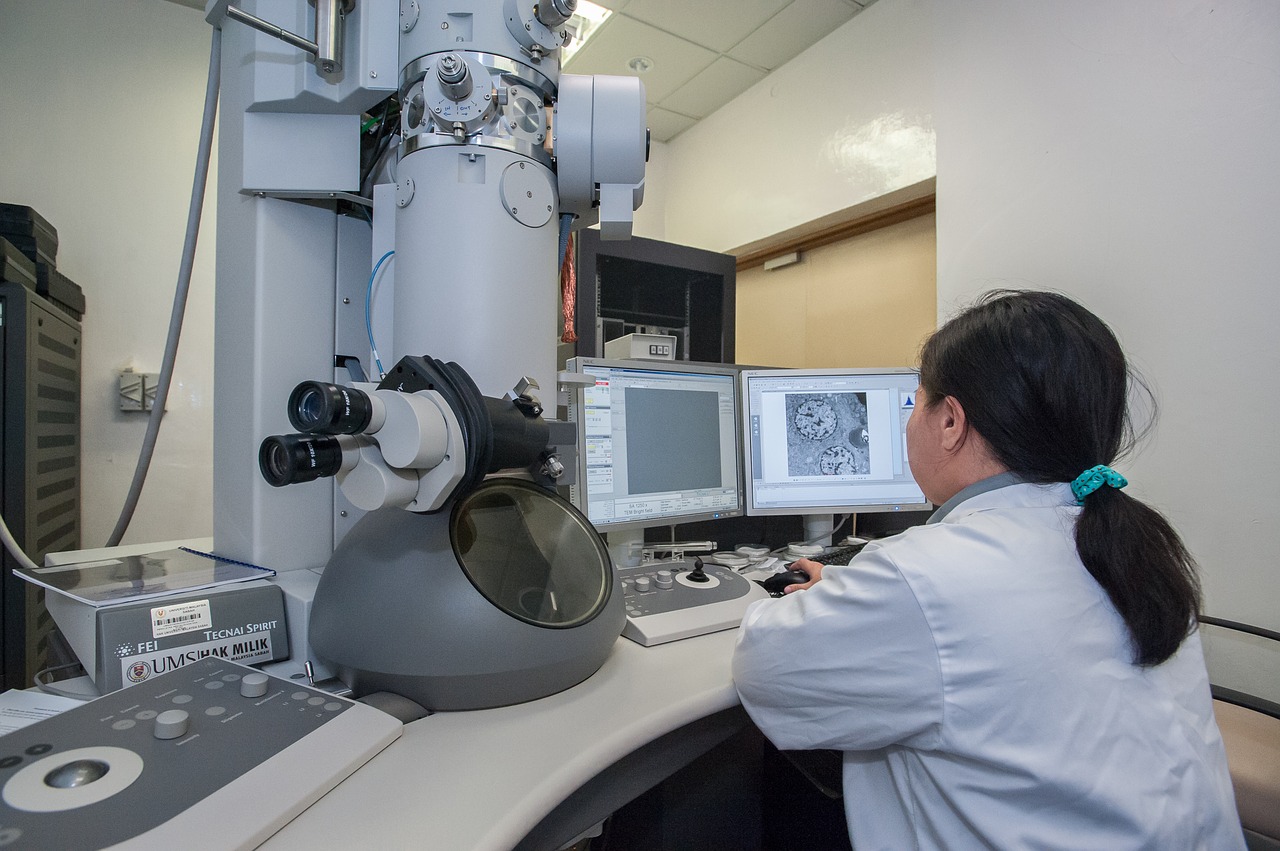
If you read my article about what materials science and engineering is, I’d like to think it should be obvious why materials science is such an enticing field of study. I’ve convinced three of my closest friends to switch to a materials science major–they each did it for different reasons, and they are all still happy with their choice!
You should study materials science if you are curiosity-driven, enjoy learning radically new things, balance logical and creative thinking, want to perform undergraduate research, and want to command a high salary. However, materials science is not for everyone, so in this article, I hope you will find all the information you need to decide if materials science is right for you.
Here are 13 reasons to study materials science:
Outline
- 1. You Are Interested in Many Scientific Subjects
- 2. You Always Want to Know “Why”
- 3. You Want to Learn New Things–All the Time
- 4. You Want to Be at the Cutting Edge of Research
- 5. You Want Flexible Job Prospects
- 6. You Want a High Salary
- 7. You Want “Easy Money”
- 8. You Want Funding
- 9. You Like Combining Logic and Creativity
- 10. You Want a Tight-Knit Department
- 11. You Like to Feel Important
- 12. You Want to Travel Abroad
- 13. You Want Access to the Coolest Equipment
- Final Thoughts
- References and Further Reading
1. You Are Interested in Many Scientific Subjects
Materials science is undoubtedly the most interdisciplinary scientific field. Everything is made of materials, so every discipline needs to relate back to materials. People often think that materials science is a fusion of chemistry and physics–and if you like both these subjects, you will love materials science–but this description is still too shallow.
Studying materials science will give you a taste of many subjects. Students can take statics classes with mechanical engineers, quantum mechanics with physicists, inorganic chemistry (or even organic chemistry if you hate yourself) with chemists, semiconductors with electrical engineers, mechanical properties with civil engineers, computation with computer scientists, and biomaterials with biomedical engineers. Don’t worry, you won’t need to take all of these classes, but you certainly can!
Because the field is so interdisciplinary, you’ll never know what you can work on! My undergraduate research advisor liked to analyze historical artwork and some of my colleagues have worked on hair, chocolate, fat-free ice cream, and more.
Materials scientists are encouraged to keep up with topics outside of their main research because you never know when you can apply a ceramics solution to a metallurgical problem.
2. You Always Want to Know “Why”
Materials science is inherently interesting because it can answer “why” for most things that happen in daily life.
Why do we boil so many foods?
Because water always boils at the same temperature so cooking by boiling water is easy to reproduce.
Why does water always boil at the same temperature?
Because thermodynamics dictates that water will change from a liquid to a gas at 100 °C and 1 atm.
And why do the thermodynamics predict that?
Because all atoms have an attractive force between other atoms, the pressure pushes atoms apart, and high temperatures cause atoms to vibrate away from each other. If the water is heated past 100 °C, the vibrational energy overcomes the attractive force and the atoms.
Why does that happen?
Materials science is all about discovering the deeper reasons for why things happen. For thousands of years, blacksmiths have known that quenching steel makes it harder, but only relatively recently has materials science been able to pinpoint the reasons.
One of my favorite things about materials science is that I can explain concepts to anyone, and because these concepts both simple and applicable to the real world, my explanations are interesting.
3. You Want to Learn New Things–All the Time
I was first drawn into materials science because it was like nothing I had ever learned before. I remember looking through my AP chemistry textbook at one of the chapters we skipped and finding a solid-solid phase diagram.
“Look!” I told my teacher. “Materials science! But . . . there’s only one question about it.”
When I first began studying materials science, so many of my fundamental chemistry questions were answered–in really simple ways. Why does NaCl (table salt) have the shape it does? It’s because of geometry! Why are metals so different from non-metals? Because metallic bonding is uniquely non-directional.
It may seem overwhelming to talk about things you’ve never heard of, like crystals, grains, defects, and phase transformations, but that’s only because most people have never even heard of these things. Most of this could be taught in elementary school, right after children learn what atoms are.
When you first start learning materials science, you will find so much easy-to-learn information that you’ve simply never heard of. Learning so much, so quickly, can be addicting.
Even once you’ve learned the easy fundamentals of the field, you won’t stop learning. Materials science is so broad that you can dive into any sub-discipline and learn its basics. One of my professors–who studied metallurgy as a student but researches ceramics now–took a few days to study water and hydrogen bonding. He was convinced that “water expands when it freezes because hydrogen bonding is broken and the ice crystallizes” was a conspiracy theory, and nobody knew the actual reason.
Materials scientists–as a personality trait–tend to be very curious about many things. The field is not advertised well, so mostly curious, self-driven students ask the right questions and find materials science on their own.
As a result, talking with any professor (or other students) can teach you something even unrelated to STEM. I’ve talked to materials science professors about poetry, art, music, history, and linguistics. One student–who was initially rejected from the graduate program at my undergraduate university–was later accepted because a professor found out he spoke several languages fluently. That professor reasoned that learning languages proved a certain dedication and curiosity that would allow him to succeed in the materials department.
You can even look at the quiz bowl (a trivia sport about wide knowledge) and chess clubs at that university–at one point, nearly everyone involved was a materials scientist. The students in that department naturally had a higher lust for learning than most students at the school. If you want to learn something new every day–regardless of the topic, you will fit right into the department of materials science and engineering.
You also have to learn new things all the time because the field is developing so quickly.
4. You Want to Be at the Cutting Edge of Research
Materials science and engineering is an incredibly fast-developing field. The number of universities in my state offering an undergraduate degree in materials science tripled in the four years between when I applied to undergrad and when I applied to graduate school.
The research is also progressing at breakneck pace. One professor who has taught a class on energy materials for the last ten years says that when he started teaching the class, he would not have thought solar power would replace fossil fuels. Now, he believes the transition will come quickly.
There are three primary reasons why materials science progresses so rapidly:
- The field is new, so we are some of the pioneers of the field. Naturally, there is a lot to discover in places where no one has ever looked.
- Materials science is the “bottleneck” of STEM. Many other disciplines have hit roadblocks that require materials solutions, so more and more researchers do materials-related research even though they don’t have a degree in materials science.
- Materials science has a lot of grant money right now, which funds exciting research.
I’ll talk about each of these points in greater depth elsewhere in this article, but for now I want to give a few real-world examples of how quickly the field is developing.
Have you noticed LED-alternatives to incandescent lighting? The blue LED light was recently invented, which finally allowed us to create white LED lights. Take a look at this graph which shows the recent explosion in luminous efficacy for white LED lights [1].
If you travel often, you may have flown aboard a Boeing dreamliner. This plane’s first commercial flight happened in 2011–and it’s special because of materials engineering! The plane uses composite materials instead of metal, which results in a dramatic decrease in weight. CFRP (Carbon Fiber Reinforced Polymer) composites account for 80% of the plane’s volume and 50% of its weight. The dreamliner uses 25% less fuel per passenger compared with aircraft of a similar size [2].
Every few years, I marvel at how much computational power has increased. Moore’s law (which says the number of transistors per chip will double every two years) sums this up [3]. To be fair, materials science isn’t the only field helping this continues to happen, but since computer chips are made of materials, we can definitely take some of the credit.
Stronger than steel and harder than diamond? Graphene is a supermaterial that you may have heard about in pop science videos or articles. Graphene is a single layer of graphite, first observed by transmission electron microscopy. Efforts to make thin films of graphite by mechanical exfoliation started in 1990, but it wasn’t until 2010 that Geim and Novoselov won the Nobel prize for synthesizing it. This is still a material that isn’t radically changing technologies yet, but it is the world’s strongest material and best heat conductor. It may revolutionize heat sinks, batteries, and much more. Graphene is also incorporated in Huawei’s latest smartphones.
5. You Want Flexible Job Prospects
Everyone needs materials scientists. Aerospace, petroleum, architecture, semiconductor, and automotive industries obviously need materials scientists, but they aren’t the only ones. Because materials scientists are trained to learn new information quickly, many companies are willing to hire materials scientists from other backgrounds because they can quickly learn the new industry.
Even within traditional materials science fields like pure metallurgy, ceramics, or polymers, there is a high demand for materials scientists. I realized the extent of this when I attended a materials science camp sponsored in part by Pepsi.
Why would Pepsi need materials scientists? Pepsi sells billions of cans each year. Sure, they buy those cans from another company, but as materials science improves, the cost of those cans decreases. Pepsi also has machines to mix their products together and buildings that house those machines. Materials science can provide cheaper lighting and improved insulation for the buildings, and cheaper, longer-lasting equipment. Regardless of what Pepsi produces in-house and what they buy from other companies, improvements in materials science helps the company.
There is not a single industry that is untouched by materials science, so if you want a degree valued by Pepsi, Boeing, Tesla, Intel, Nestle, Exxon Mobil, or Apple, materials science is the major for you.
What else can materials scientists do? They can work on . . .
- superalloys or thermal barrier coatings for very high temperature
- materials for cryogenic applications
- lightweight materials for aircraft and space industry
- materials that will potentially replace some parts of the human body like teeth or some parts of bones
- functional materials exhibiting magnetocaloric, magnetostrictive, piezoelectric, or other effects
- combining some groups of materials in order to obtain composites with unique properties
- nanomaterials
- shape memory alloys or polymers
- nature-inspired materials. For example, superhydrophobic surfaces were inspired by the surface of a lotus flower
- food
- and much more!
If you’re not sure what industry you’d like to work in, majoring in materials science will allow you to remain flexible.
6. You Want a High Salary
Okay, I know you aren’t so shallow as to choose a major based only on salary, but the fact remains: many people only find out about materials science and engineering because they found it on some clickbait site about the highest paying majors in 20XX year.
When I googled this just now, aside from materials science, I found:
- Metallurgical engineering
- Aerospace engineering
- Mining and mineral engineering
- Industrial engineering
- Petroleum engineering
All of these may be offered as a degree in various universities, but they can also fall under the umbrella of materials science. Sure, someone with a petroleum engineering degree may have an easier time getting a job in the petroleum industry than someone with a materials science degree and no petroleum-specialization classes, but materials scientists can get these jobs. On the other hand, the success of the oil industry can be volatile, and a materials engineer will have a much easier time finding jobs elsewhere when compared to a petroleum engineer.
So materials scientists can qualify for tons of jobs that don’t say “materials engineer” in the job title–but what about the jobs that do specifically call for materials engineers or materials scientists?
Rather than rely on salaries I have heard from others (starting salary rumors: about $60K with bachelors, $80K with masters, and $110K PhD), I will summarize some data from the US Bureau of Labor and Statistics. For my readers in the rest of the world, I advise you to check the statistics of your own country.
Before we dive into this data, however, I want to clear up one common point of confusion. I’ll present data about “materials scientists” and “materials engineers.” I have an entire article about the difference between these terms, but for most purposes they mean the same thing. A person with a materials science degree can go into either job, but whether the job title says “engineer” or “scientist” will depend on the type of work you will be doing. Generally, “scientist” jobs will be research and development, while “engineering” jobs will be anything else (failure analysis, quality control, optimization, etc.).
With that out of the way, let’s take a look at the statistics for materials scientists [4] and materials engineers [5].
If you are better than the bottom 10% of these jobs, you will earn more than $50,000 annually. The median salaries are $92K (engineers) and $100K (scientists), and the top 10% of earners can make over $150K.
Currently, the semiconductor and computer industries may the highest salaries for materials scientists and engineers, with median salaries of $120K-$130K.
New Mexico is the top-paying state for materials science and engineering, with median salaries of around $135K and $125K.
7. You Want “Easy Money”
This is a terrible reason to choose materials science and engineering, but it is true. As you just saw, even the lowest salaries for materials science can pay quite well. If you want to slack off and still earn above average pay while only spending 4 years for an undergraduate degree, it’s hard to find a better major than materials science.
Part of the reason I included this section is because I need to be honest: not every materials science job will change the world with innovative research. It happens more than in other fields, but sometimes a company just needs you to inspect the parts and make sure there are no manufacturing issues. Sometimes companies need you to perform routine corrosion inspection, sample preparation, quality control, or failure analysis. There’s nothing wrong with this kind of work–and it’s vital to industry–but since many materials scientists are creatively oriented, they tend to find such routine work boring. That’s why these jobs (which can often be filled by barely-competent materials scientists) may command relatively high salaries. I don’t want to fill materials science classrooms with slackers, but I have to admit that if you want a stable, routine, highly-paid job, I can think of no better degree to get this job than materials science.
There is another reason why materials science is “easy.” If you aren’t interested in studying a particular topic in great depth, materials science classes tend to pass over difficult topics. The field is so broad that most undergraduate classes don’t have time to make every student an expert in every subject, so they mostly give you a surface-level understanding of each topic.
Materials science typically has the lowest math requirements of all engineering. You’ll probably take 1 higher-level chemistry, physics, and statics course. To be honest, I found that most of my peers with physics backgrounds were better prepared than me for graduate school, because the physics undergraduate classes made them actually learn theoretical math. My materials science classes gave me wide, practical knowledge, but in my opinion this is much easier than degrees that teach deep, theoretical knowledge.
Most materials science students do specialize in certain topics, and there are always resources to challenge you, but if you want to get a materials science degree with the minimum effort, Calculus 2 will probably be your hardest class.
From a less greedy (but still kinda greedy) standpoint, materials scientists have great chances of getting grant money.
8. You Want Funding
I previously mentioned that many of my graduate student colleagues come from physics backgrounds. The reality is that universities allocate funding based on research that is profitable. Since materials science research is usually application-based, and can often be directly applied to industry, universities (and researchers) make tons of money from materials-related patents. As a result, they tend to allocate more funding to materials departments. Consider that materials departments tend to have fewer students than other departments, and the per-capita funding is usually among the highest of all university departments. Additionally, industry may directly fund specific projects.
If you pursue a Ph.D. in materials science, you will not need to pay for it. I am effectively paid $90,000 each year (including the $60,000+ tuition waiver) for my Ph.D. work.
Physics students are especially notorious for switching to graduate school in materials science, because they realize that they can’t find a job with just a bachelor’s degree in physics, and materials science programs have more funding.
Funding is also important as an undergraduate, because you may be paid for undergraduate research. In every field, undergraduate research is the #1 thing you can do to improve your resume. In materials science, there is enough funding that you can often be paid to do it! That is not always possible in other STEM fields, and it is extremely rare outside of STEM.
9. You Like Combining Logic and Creativity
Materials scientists tend to have some recurring personality traits. The nature of our work requires logical application of the scientific method, but it also requires intuitive leaps of creativity.
In my very first materials science course, we read a philosophical book and some poems, discussed how to defend the university in case of a zombie attack, discussed how to stage a military coup in a hypothetical 2-dimensional society, and built tube furnaces from scratch. One of our first lectures was about how to remove the imaginary division between STEM and humanities. As someone who was also majoring in English, I was thrilled. Other students who didn’t like both logical rigor and creative solutions left to pursue other majors.

To see a World in a Grain of Sand . . .
AUGERIES OF INNOCENCE, WILLIAM BLAKE
SEM micrographs of sand [6]
Some of my exams were extremely open-ended. My professor would hand us a paragraph with a hypothetical scenario and a goal–we could present any solution to the problem. Once, we went back in time A Connecticut Yankee in King Arthur’s Court-style, and had to figure out how to build technologies to conquer neighboring countries. Another time, we needed to start a colony on Mars.
Many research topics in materials science involve interpreting data from microscopes. There are definitely logical procedures that should be followed when collecting the data, but interpreting images often relies on pattern recognition.
As a final thought on the combination of logic and creativity: if you like chess, you will probably enjoy materials science. That’s not to say all chess players should be materials scientists, or all materials scientist like chess, but in my experience, a fair percentage of materials scientists have a natural knack for the game. The combination of logic and creativity that materials scientists hone in their research often gives them a jump-start when learning chess.
10. You Want a Tight-Knit Department
In a way, I hope to destroy this unique benefit of materials science departments. One of the goals of this website is to publicize materials science and engineering so more people know about the field. However, currently materials science departments are usually among the smallest departments of any college of engineering. When I entered undergrad, the class that graduated before me had 12 students. My class graduated 24 students. In grad school, I attend the oldest materials science program in the world. There are about 40 students in my cohort.
I have also had the contrasting experience of being an English major. I can think of maybe two people that I had more than one English class with. My materials classes were offered once per year, and every student was in every class.
We all got to know each other–and the professors–very well. Every Wednesday before chess club, I’d join one of my professors and his son for dinner at the cafeteria. Sometimes, I’d chat with a group of professors eating there for lunch.
As a department, we played lots of games together. We won intramural frisbee two years in a row, but we also played some other sports, as well as card games and board games.
There’s not a lot of materials science information online (well, there wasn’t before I built this website), so you need to rely on your classmates. We studied together, helped each other on research projects, and went to conferences together. Somehow, we even got permission to make swords!

Professors always had an open-door policy. I could talk to them about career advice, financial advice, and relationship advice. Sometimes I’d stop by and talk about the latest fantasy book a professor was reading.
Even in grad school, where the department is much bigger and I mostly interface with only one professor, we still have a tight-knit feel. Many materials scientists room together. Our cohort frequently has game nights or potlucks. The entire department hosts a weekly coffee hour, and even as grad students, we send a materials science team to every intramural sport.
There are other small departments, and I don’t want you to think that materials science departments are the only ones with the qualities I’ve described. However, the departments do tend to be small, and I have only positive things to say about a (well-funded) small department.
11. You Like to Feel Important
Materials science is the “bottleneck” of modern STEM. Chemistry, physics, and math have been studied since antiquity. Mechanical engineers have plied their trade since the invention of the steam engine. Electrical engineers have existed since the lightbulb.
However, the electron microscope–a tool which proved many of the fundamentals of modern materials science–scarcely predates the computer. In fact, there are so many more computers in the world than electron microscopes, I can confidently say that materials science is less developed than computer science.
We figured out the thermodynamics of the steam engine within 200 years of its invention. Within 20 years of Edison’s lightbulb, we knew about electrons. Computer science predated computers.
In contrast, materials scientists are still arguing about how to reproduce swords from 500 years ago [7]. Ten years ago, some materials scientists won the Nobel prize for sticking some scotch tape to pencil graphite and synthesizing graphene [8].
While other STEM fields have had decades to develop, materials science lags behind. Because of the field’s recent institutionalization and general anonymity, very little materials science research has been performed. We are now in the golden age of materials science, where groundbreaking discoveries are being made annually.
We know how to make more efficient cars. It’s not like mechanical engineers don’t know how to increase the efficiency of the engines. Rather, the engines are designed to waste gas because if they didn’t, the engines would overheat and the engine block would melt.
Did you know that the SR-71 blackbird–one of the most iconic spyplanes–is not airtight? It travels so fast that it heats up and thermal expansion becomes a serious problem.

The development of smartphones and improved computers is directly tied to materials science. Fundamentally, improving computer power means making the parts smaller so you can fit more parts in the same computer. Materials science allows us to process the materials better and cheaper. Computer chips are now so small that researchers need to engineer materials to take quantum effects into account.
If you look at any cool, theoretical things we can make, their development depends on materials science advancements. Colonizing Mars requires more efficient solar panels and batteries. The same is true for electric vehicles. (Incidentally, this is why the only person besides Elon Musk to work at both Tesla and SpaceX is Charlie Kuehmann, head of materials science). ITER–the nuclear fusion reactor currently being built–was made possible by advances in superconductors. It’s true that these superconductors were developed 30 years ago, but that development is what made planning ITER possible.
Developing quantum computers is no longer a debate among physicists. It is a question of how to make a material that satisfies the necessary requirements.
Because materials science is the STEM bottleneck, if you discover something new in the field, you probably won’t need to wait *that* long to see it in action. Odds are that your discovery will be immediately useful to progressing some other field which has hit a materials-related roadblock.
12. You Want to Travel Abroad
Materials science offers many opportunities to travel abroad (remember, we have funding). Personally, I’m not much of a traveler, so I can’t say I was very excited when “lots of travel opportunities” was presented to me as a selling point for the major.
However, I did spend two summers in Japan, loved my time there, and met my wife (who was also interning there)! So it turns out that travel opportunities were especially important to me.
I also don’t want to say that travel opportunities don’t exist in other fields. In Japan, I met researchers studying abroad from many different disciplines (in fact, I stayed in a dormitory specifically for foreign researchers). I don’t even want to say that there are more travel abroad opportunities than in other majors (although it’s probably true).

I will simply say that there are many funded travel abroad opportunities. Many of my graduate colleagues have spent time studying in a foreign country. Ample opportunities were available when I was an undergraduate. My trip to Japan happened because a scientist there reached out to my research advisor, he asked me if I wanted to go, and I said yes. If I had been actively looking for travel opportunities, I would have found them even sooner.
The key, again, is funding. So many English majors applied for a select few scholarships to travel abroad. Even if they got the scholarship, it probably would not have paid them a living stipend (like mine did). But researchers are usually willing to “hire” materials scientists for a summer because they know that the research you perform will pay for your stay.
If you are interested in opportunities to travel abroad, my wife and I can put together a massive list of these opportunities. In the meantime, I will suggest two wonderful places to study materials science abroad. My wife and I met at the National Institute for Materials Science (NIMS) in Tsukuba, Japan.

My wife also spent a year interning at the European Organization for Nuclear Research (CERN) in Geneva, Switzerland.

(Yes, that’s the shirt we got for winning intramural ultimate frisbee).
13. You Want Access to the Coolest Equipment
Yes, everything comes back to funding. I’m not sure if this is true for every university, but at both universities I have studied at, materials science holds a prestigious position relative to other departments.
If you entered my undergraduate university during the summer, you would see that the entire engineering building was filled with materials scientists. Many of us landed internships at companies or abroad, but others chose to stay at their home lab and do undergraduate research. It’s just so easy to find interesting topics in materials science and a professor who is willing to guide you.
I’m sure there were some percentage of mechanical or electrical engineers who also got internships, but very few stayed at their home labs.
As a result of the prestige that the materials department carried, we had special privileges. Chiefly among them: our department “owned” lots of specialized equipment. Each professor had his or her own equipment that they paid for with their own budget, but there was an additional center for really expensive equipment that the entire university could use. That center was housed within the materials science department, so we had easier access than all other departments.

To be fair, other centers existed, and our center had equipment that was more central to materials science. But, since materials science is so interdisciplinary, work that is central to our field is also peripheral to other fields, so we often had students from other departments use “our” state-of-the art equipment.
By the way, the center had a huge budget since some of the equipment was so expensive. Obviously I can’t just run to Amazon and tell you how much an atom probe costs (it’s definitely several millions of dollars), but I can get a pricetag on the chairs. Allegedly they cost $1500, and I’ve linked to a similar chair on Amazon so you can see the current price. (It’s an affiliate link so I’ll get a few pennies if you buy something else today, but please don’t buy that overpriced chair).
Here are a few pieces of equipment that you may find in a typical materials science department:
- Scanning Electron Microscope (SEM) is one of the most-used tools for materials scientists. This machine allows us to see objects much smaller than visible light.
- X-Ray Diffraction (XRD) is a machine that shoots X-rays at a sample and can use the diffraction matters to measure atomic spacing.
- Transmission Electron Microscopes (TEMs) are even stronger than SEMs, and actually shoot electrons through the sample. With TEM, you can even see columns of atoms.
- Atom Probe Tomography (APT) is a technique where you blast away individual atoms and, using a detector, can reconstruct the sample atom-for-atom.
Final Thoughts
I hope this article has helped you decide if materials science is right for you! If you do want to pursue this major, this site will prove a valuable resource. If materials science is not for you, I wish you luck in your future endeavors!
References and Further Reading
If you aren’t sure what materials science, is, check out this article which explains the field!
If you are confused about the difference between materials science and materials engineering, here is a long-winded article I wrote (which basically says there is no difference).
[1] Siddha Pimputkar, James S. Speck, Steven P. DenBaars and Shuji Nakamura, Prospects for LED lighting
[2] Soo Kim, Is the Dreamliner worth the hype? Here’s 10 reasons why it might just be
[3] Moore’s Law: Transistors per microprocessor, Our World in Data
[4] Occupational Employment Statistics for Materials Scientists, US Bureau of Labor Statistics
[5] Occupational Employment Statistics for Materials Engineers, US Bureau of Labor Statistics
[6] Pei-Hsing Huang, Shao-Yu Chien, Ping Wu, Chuen-Shii Chou, Optimal design of high-strength water-soluble sand core for investment casting system: Thermodynamic analysis and experimental verification
[7] Response to Verhoeven comments on Damascus steel, Materials Characterization
[8] Press release: The Nobel Prize in Physics 2010